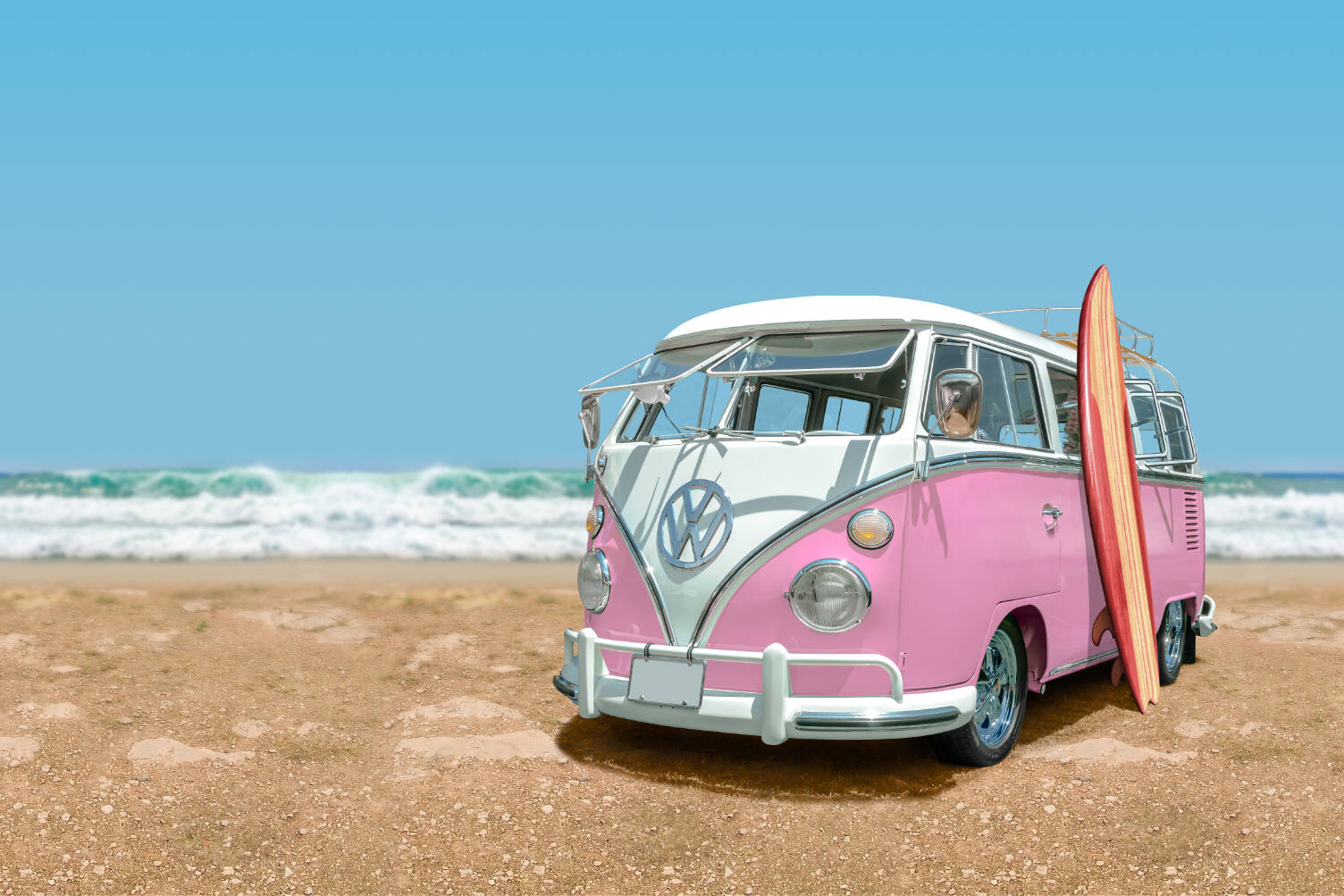Anyone remember the VW Bus? In a world that seems obsessed with AI, tech and everything new, a groovy blast from the past is getting ready to make a comeback. Yes, you read that right!
The iconic and quirky Volkswagen hippie van is staging an incredible revival, leaving a trail of peace signs, tie-dye, and good vibes in its wake. Next year, Volkswagen is bringing back the bus as the ID. Buzz, a 21st-century all-electric remake of the legend.
It was referred to as the Bulli, Transporter, Kombi, Microbus, Samba, or Campervan in various international markets. Due to its popularity as the icon of the American counterculture movement, we remember it as the “hippie van.” But what is it about this timeless symbol of counterculture that has captured the imagination of the modern era? Is it merely a whimsical fascination with a bygone era, or does this resurgence mean something more? Let’s hit the open road with Way.com and explore the cultural legacy and incredible comeback of the Hippie Van.
The roots: A colourful journey of freedom and expression
The Microbus, or the Volkswagen Type 2, was first introduced in the 1950s by the German automaker Volkswagen. Little did they know that this unassuming van would soon become an emblem of an entire generation’s hopes and dreams. In the late 1960s and early 1970s, the world witnessed an unprecedented cultural movement that swept across America, challenging societal norms and advocating for peace, love, and unity. As a result, this versatile van became a canvas for self-expression, adorned with vibrant colors and messages.
As the hippie movement gained momentum, young people seeking an alternative way of life saw the VW Bus as more than just a mode of transportation; it embodied their quest for freedom. Traveling in a Hippie Van was a statement—a way to rebel against the materialistic and war-torn world.
From serving as a symbol at anti-Vietnam War demonstrations and as an emblem for the fight against rapid industrialization, the Volkswagen Microbus and counterculture became synonymous. By being linked to renowned musicians like Bob Dylan, The Grateful Dead, and The Beach Boys, as well as music festivals like Woodstock, the Hippie Van’s mystique was further enhanced.
What happened to the hippie van?
As the 1970s rolled in, the hippie movement gradually waned, as did the glory days of the Hippie Van. A combination of societal shifts and changing preferences led to a decline in the popularity of the iconic vehicle. Still, its legacy continued to inspire generations, leaving an indelible mark on popular culture, art and even Hollywood films.
- 1973 Oil Crisis: The oil crisis led to rising fuel prices, making Hippie Vans less desirable during the economic uncertainty.
- 1980s: The 1980s saw a shift towards fancy and tacky trends. The desire for flashy, modern cars clashed with the retro charm of the Hippie Van.
- Rise of Modern Campervans: The industry evolved, offering sleeker, more sophisticated campervans with improved features and better fuel efficiency, drawing attention away from the classic Hippie Vans.
- Changing Aesthetics: The visual appeal of car designs transformed with time. The colorful VW Hippie Vans belong to a different era, making them less attractive to younger car buyers.
A modern renaissance: The electrifying resurgence of the hippie van
In 2014, the production of the Microbus came to a halt. But wait, the story doesn’t end there! The VW bus’s return has been in the works for a while. Just when it seemed like the sun had set on the iconic Hippie van, a new chapter was about to unfold – and it’s electrifying!
Gone are the days of gas-guzzling; this new iteration promises to capture the essence of the past while embracing the future. With sleek designs, advanced technology, and a renewed commitment to environmental responsibility, this electric reincarnation is set to captivate the hearts again. The ID. Buzz, the Microbus’ spiritual successor, is expected to be available in the American market in late 2024. The new ID. Buzz will also be available with rear-wheel-drive and all-wheel-drive, with the latter offering a total of up to 330 horsepower compared to the 30 horses that debuted in 1950.
Final thoughts
From its origins as a symbol of counterculture to its recent electrifying rebirth, the Hippie Van’s timeless presence continues to weave its magic. So, whether you’re a nostalgic yearning to relive the glory days or a Gen Z searching for eco-conscious thrills, the new Hippie Van might be the best choice for you. Now, all we have to do is wait and see.
FAQs
What are those hippie vans called?
Known officially as the Volkswagen Type 2, the Hippie Van is known by various names in different international markets, including Bulli, Transporter, Kombi, Microbus, Samba, Campervan, or just Bus.
How much do hippie vans cost?
The cost of hippie vans can vary widely depending on the model, condition, and year. Since its popular among car collectors, the prices range from a few thousand dollars for older, less restored models to tens of thousands for well-maintained or fully restored ones.
Where can I buy a hippie van?
The classic Hippie vans can be found through various online marketplaces. Additionally, specialty car dealers, car collectors, vintage car auctions, and classic car shows are excellent places to find these iconic vehicles.
This story was produced by Way.com and reviewed and distributed by Stacker Media.
https://creativecommons.org/licenses/by-nc/4.0/?ref=chooser-v1

